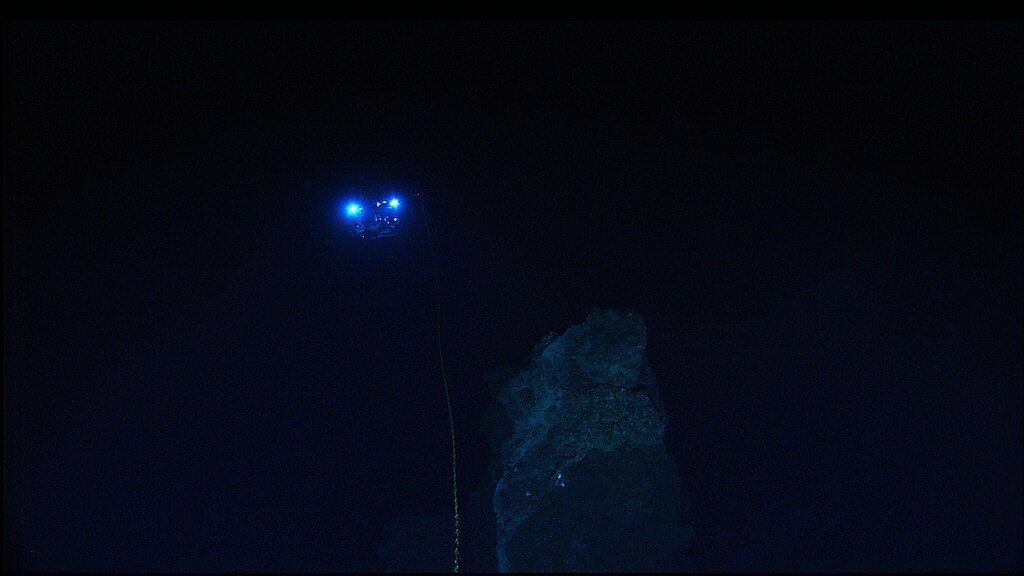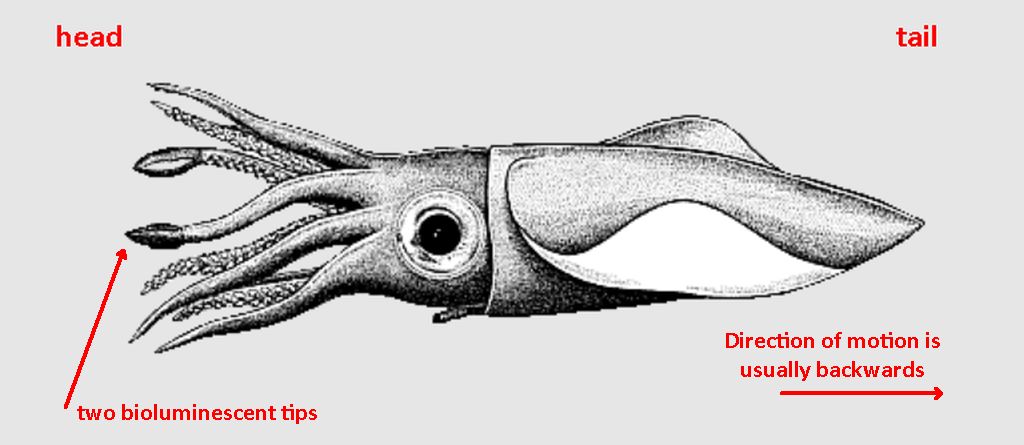
23 June 2023
While the media focused this week on the search for a missing tourist submersible that imploded on its way to the wreck of the Titanic, we saw underwater search footage illuminated by headlights. Beginning at the ocean’s twilight zone, 200-1000 meters below the surface, headlights are required because sunlight cannot reach that deep. In underwater darkness deep sea creatures use bioluminescence.
In 2005, for the first time, Japanese scientists filmed a Dana octopus squid (Taningia danae) and saw its “headlamps” or photophores on the tips of two tentacles, some of the largest such organs known to science and comparable in size to fists or lemons. It is so dark in this squid’s natural habitat, 240 to 940 meters below the surface, that scientists believe the lights are used to stun its prey.

In September 2015 NOAA’s ship Okeanos Explorer was roving the undersea world near Hawaii with a robotic submersible when two Taningia danae approached the robot and acted aggressively.
Were the squid annoyed by the man-made headlights?
Maybe they thought the headlights were the signal of a competitor.
(photo and video credits are in the captions; click on the captions to see the originals)